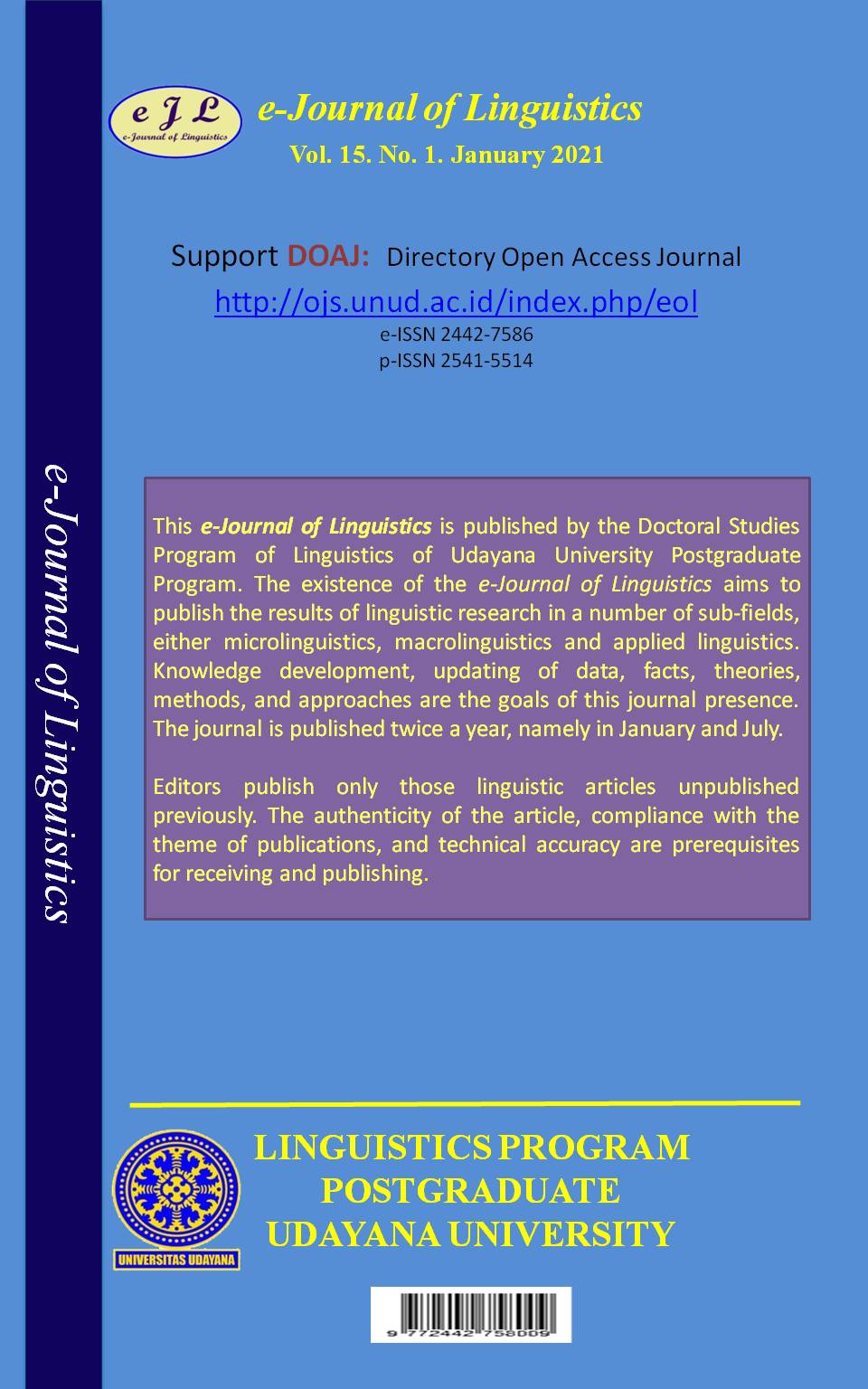Five Japanese Synonymous Verbs GO
Abstract
The proper use of synonymous words is a problem that is often faced by foreign language learners. Native speakers of a language often experience difficulties when asked to explain the differences in synonymous words. They use their linguistic instincts to differentiate the use of these words, or what in Japanese is called kan ?. This paper raises the synonym of the verb 'go' which in Japanese has five words, namely omomuku ??, irassharu ??????, mairu ??, kaeru ??, and iku ??. This paper uses a qualitative descriptive method. Synonyms of these verbs will be observed based on the frequency of their use in writing and oral languages ??in two Japanese corpora. In addition, the meaning components of these verbs are mapped to see the range of use of each of the verbs. Based on observations on the frequency of use, it is known that these five verbs have differences in the variety of languages ??used, namely: omomuku have the lowest frequency of use in both written and spoken registers. Meanwhile, based on observations on the mapping of meaning components, the five 'go' verbs also show differences, namely: iku is the verb with the most meaning components. Thus, it can be concluded that these five synonymous verbs 'go' cannot completely replace each other. There are some usage limitations in the presence of each of these verbs.
Downloads
References
Baker, P. 2010. Sociolinguistics and Corpus Linguistics. Edinburgh: Edinburgh University Press.
Gumbira, N. R. 2013. Analisis Makna Verba Omou dan Kangaeru Sebagai Sinonim. Universitas Pendidikan Indonesia. repository.upi.edu.
Kato, R. [n.d.]. Nihongo Kyouiku no Shomondai – Ruigigo Bunseki Shikoudoushi “mezasu” to “nerau” – [in Japanese] https://www.lang.nagoya-u.ac.jp/nichigen/menu7_folder/symposium/pdf/2/08.pdf (accessed on 17 April 2018).
Maekawa, K., et.al. 2014. Balanced Corpus of Contemporary Written Japanese. Lang Resources & Evaluation. pp. 345–371. doi: 10.1007/s10579-013-9261-0.
Miyata, K. [n.d.]. Gairaigo “meritto” to sono ruigigo no imihikaku – shinbun wo shiryo to shite – [in Japanese] http://pj.ninjal.ac.jp/gairaigo/Report126/houkoku3-6.pdf (accessed on 16 April 2018).
Shiba, T. H. and Cho K. J. 2017. Koopasu ni Motozuita Ruigigo Bunseki – “Miotosu”, “Misugosu”, “Minogasu” wo rei ni –. [in Japanese] https://ci.nii.ac.jp/naid/120006010658 (accessed on 17 April 2018).
Sudaryanto. 2015. Metode dan Aneka Teknik Analisis Bahasa: Pengantar Penelitian Wahana Kebudayaan secara Linguistis. Yogyakarta: Sanata Dharma University Press.
Sutedi, D. 2008. Dasar-Dasar Linguistik Bahasa Jepang (revised edition). Bandung: Humaniora.
Sanseido Daijirin (https://www.weblio.jp/content/)
Zarifa, R. N., Herniwati, and N. Sutjiati. 2017. Analisis Kesalahan Penggunaan Adjektiva Taisetsu na, Daiji na, dan Juuyou na. in EduJapan Journal vol.1, No.1, pp. 6-18. http://ejournal.upi.edu/index.php/edujapan/article/view/7550/0

This work is licensed under a Creative Commons Attribution 4.0 International License











